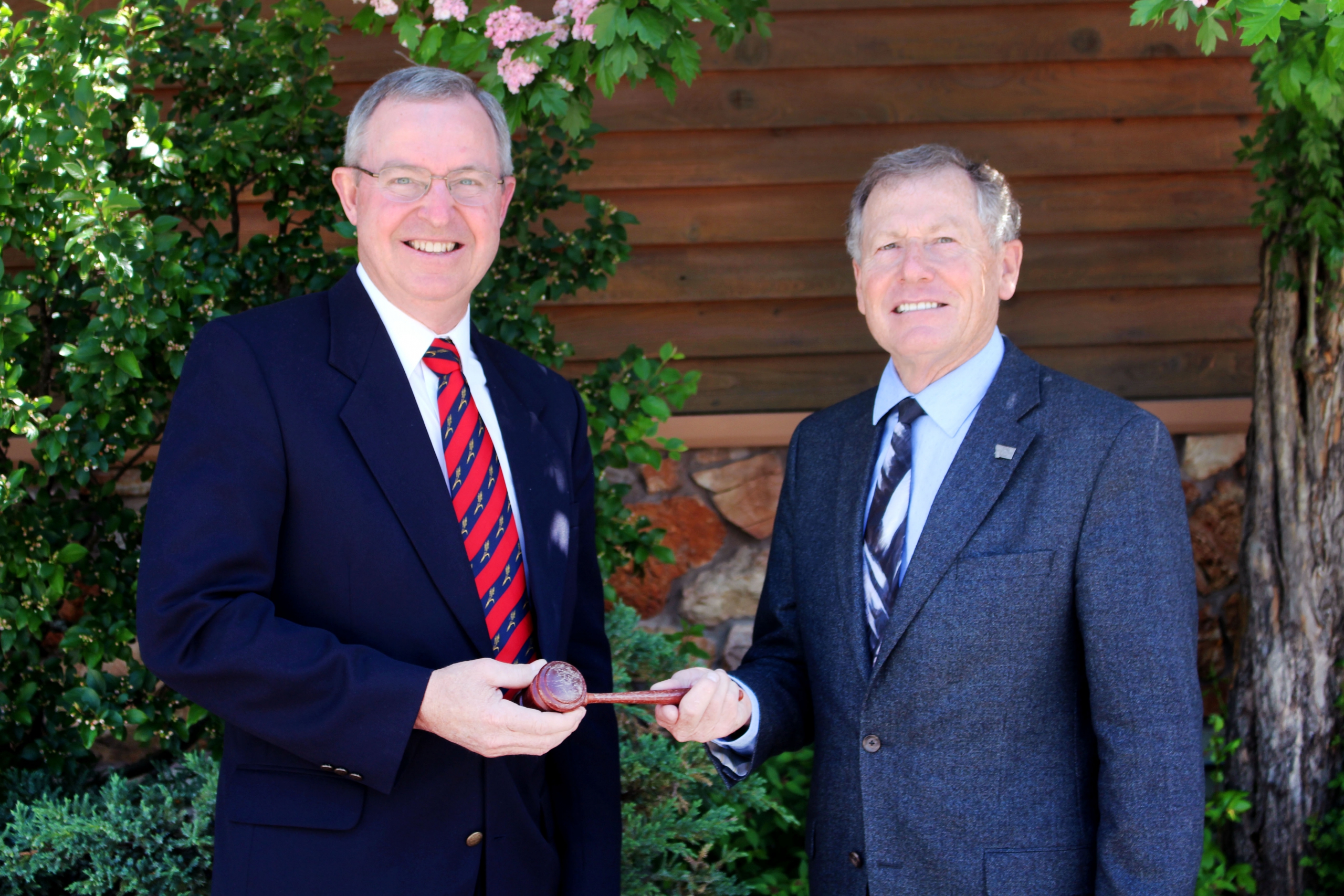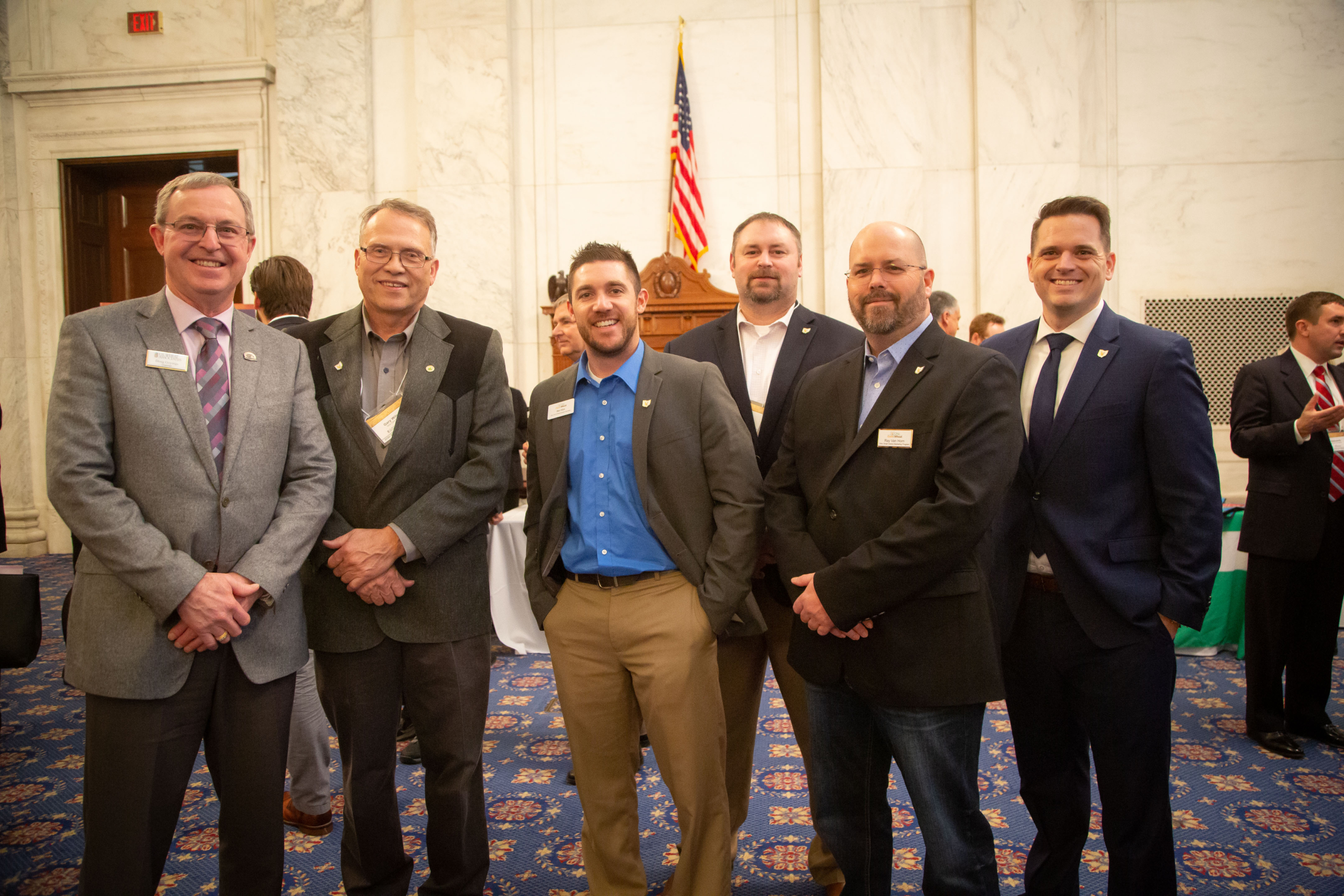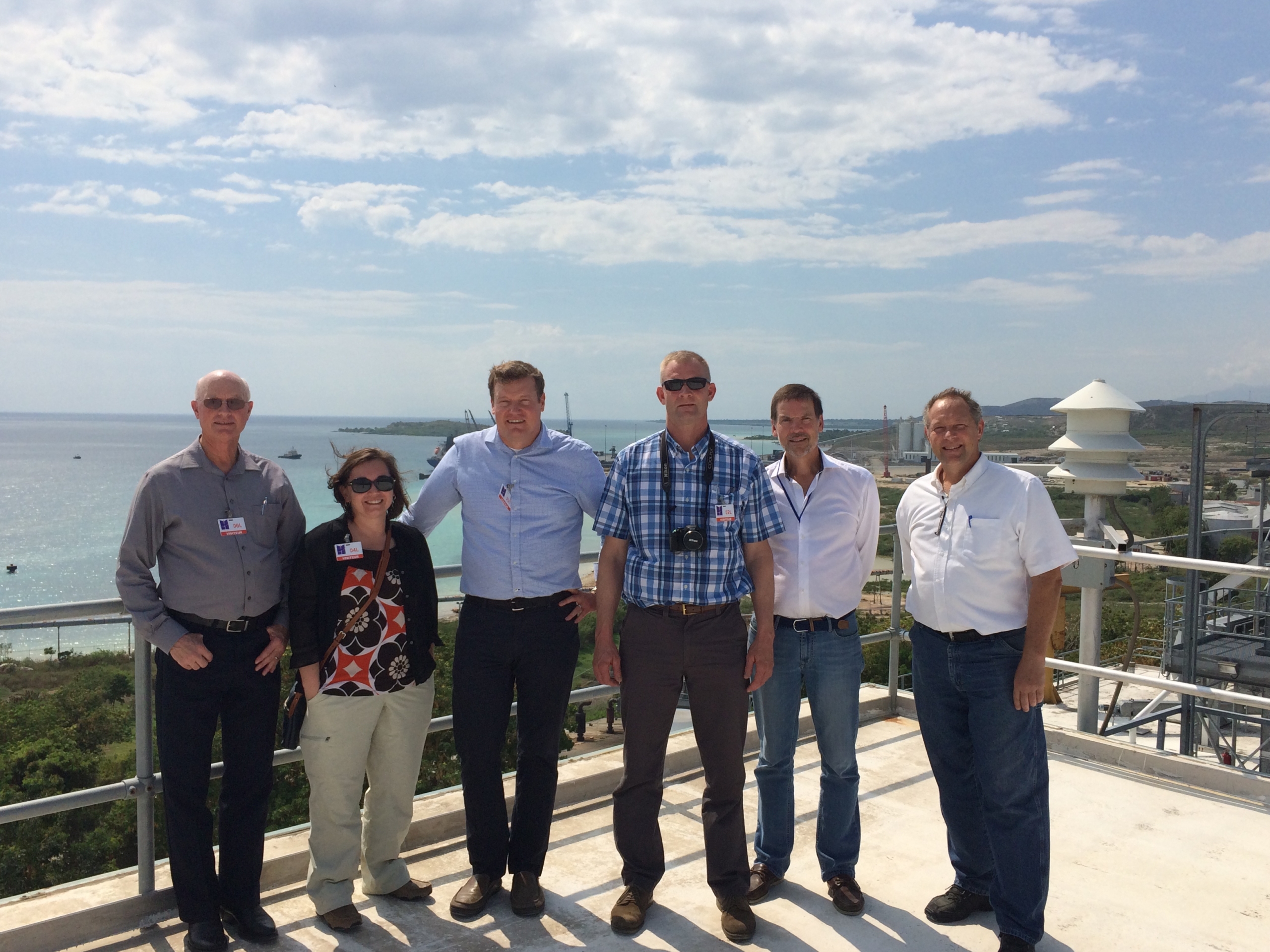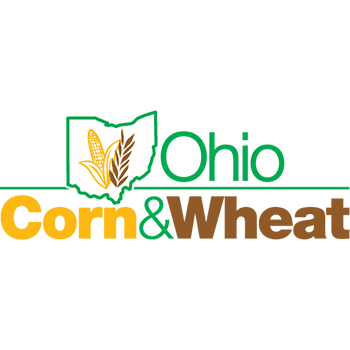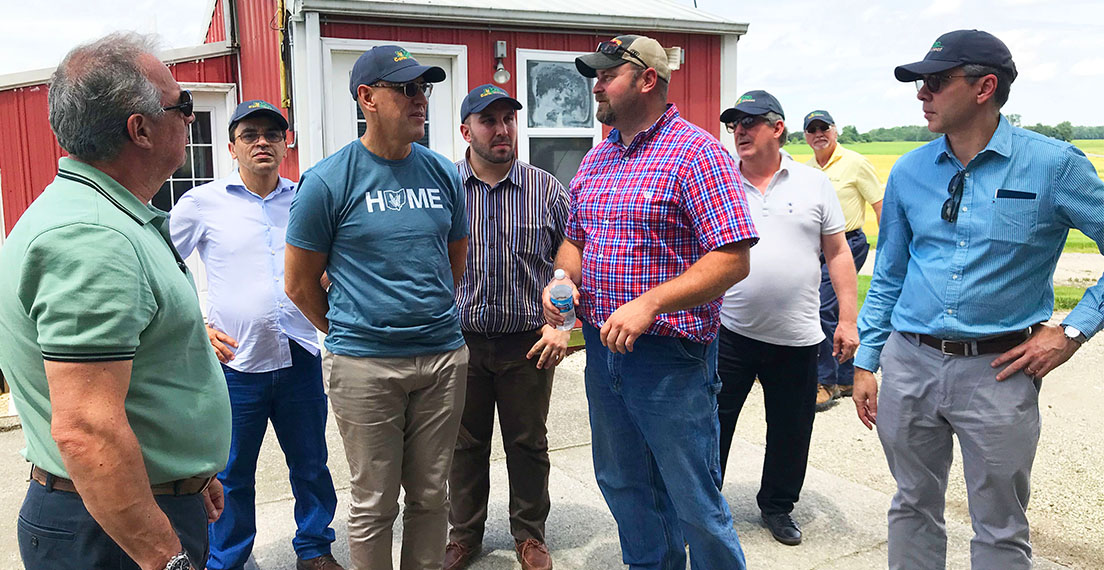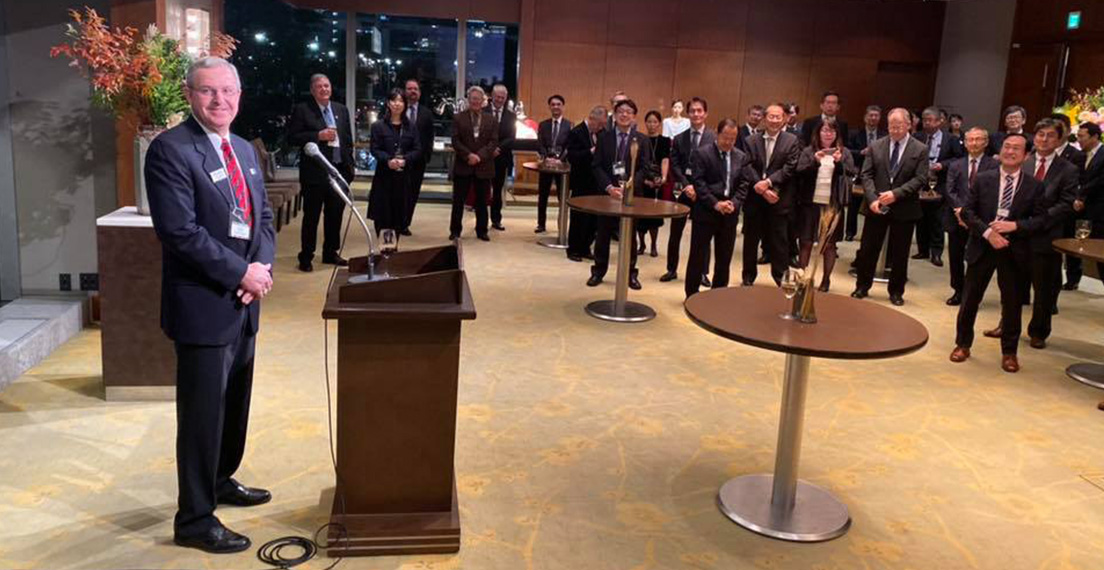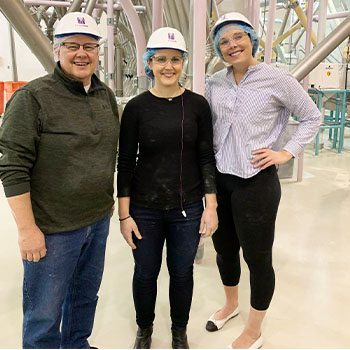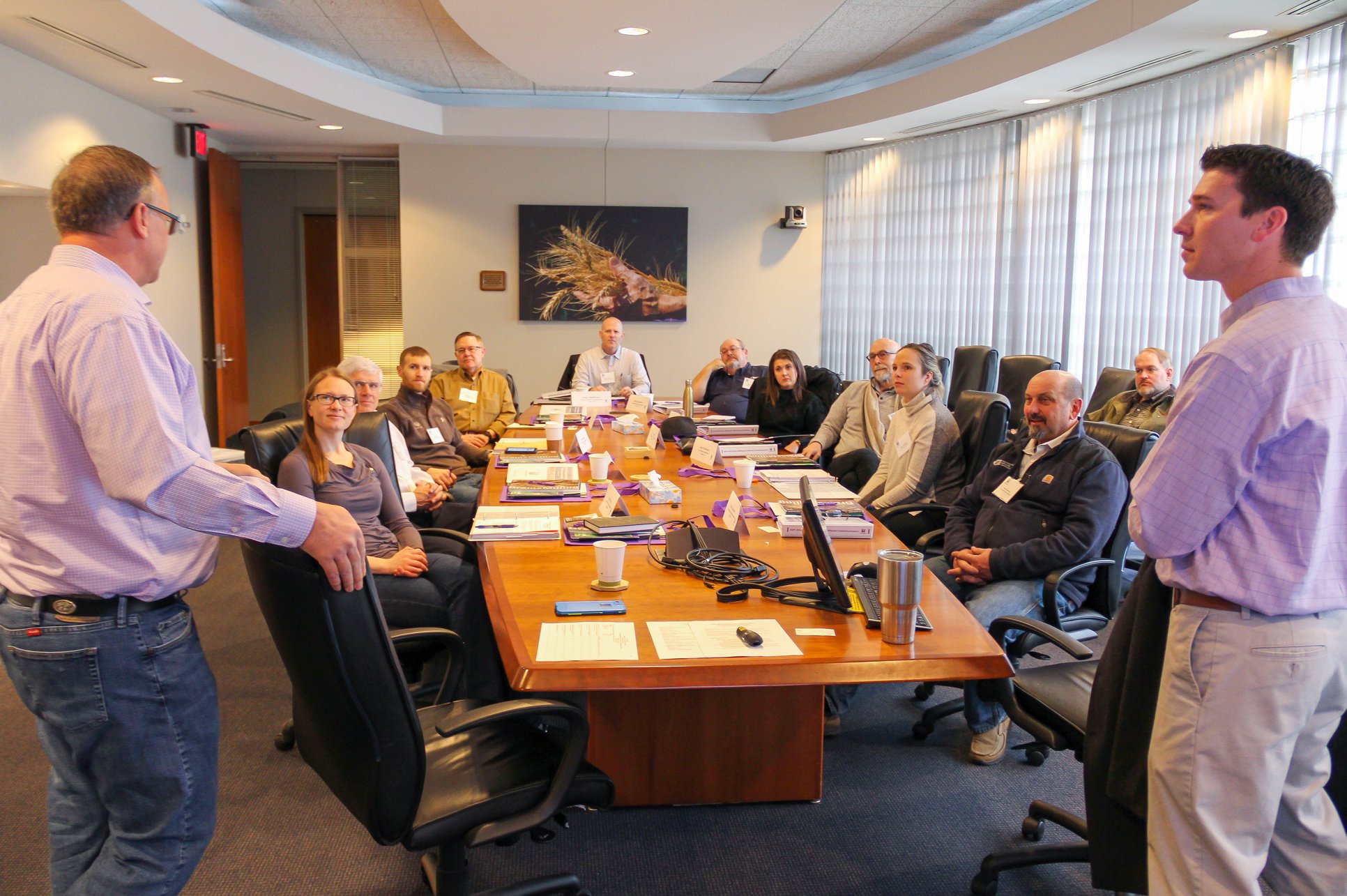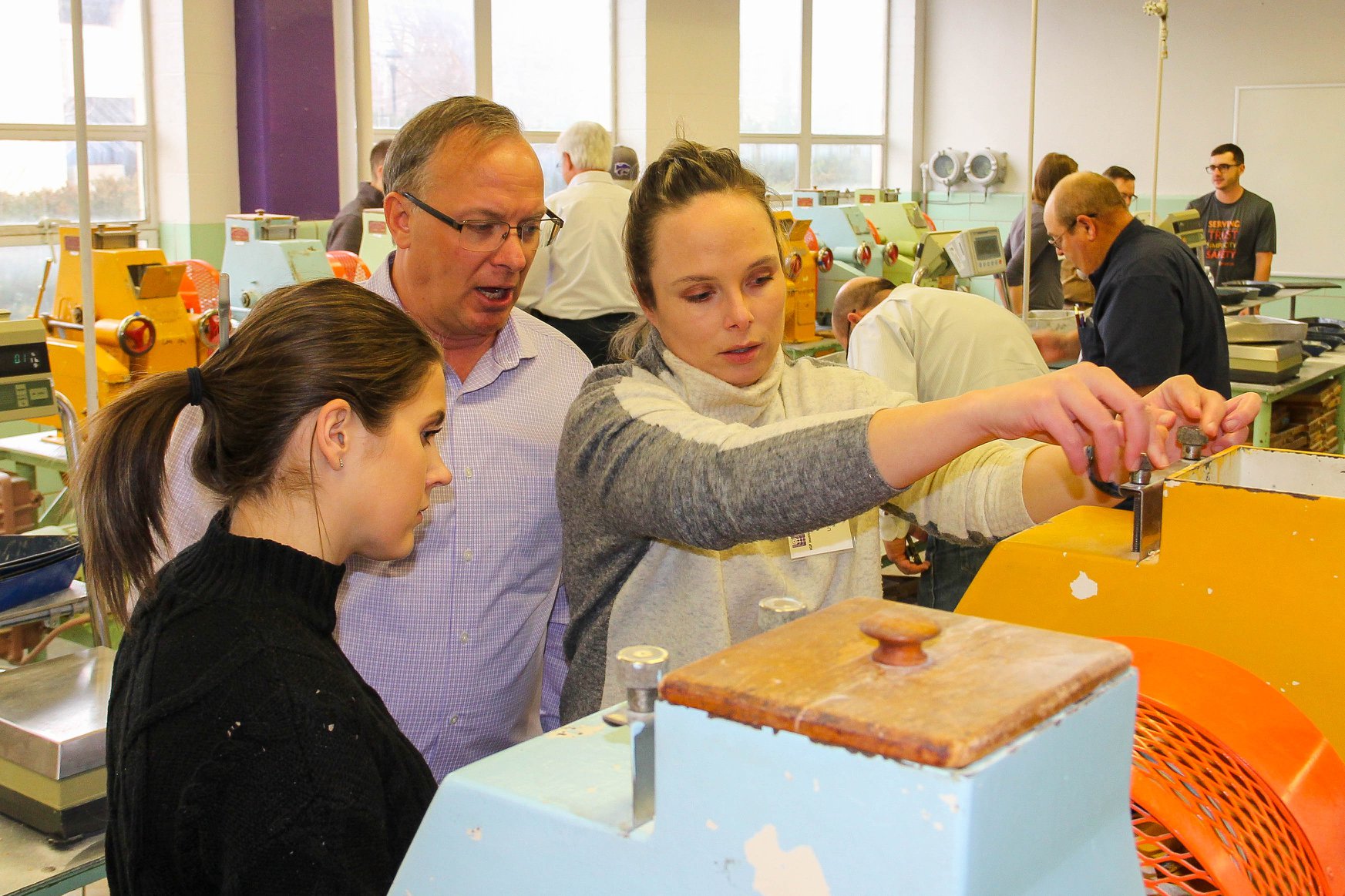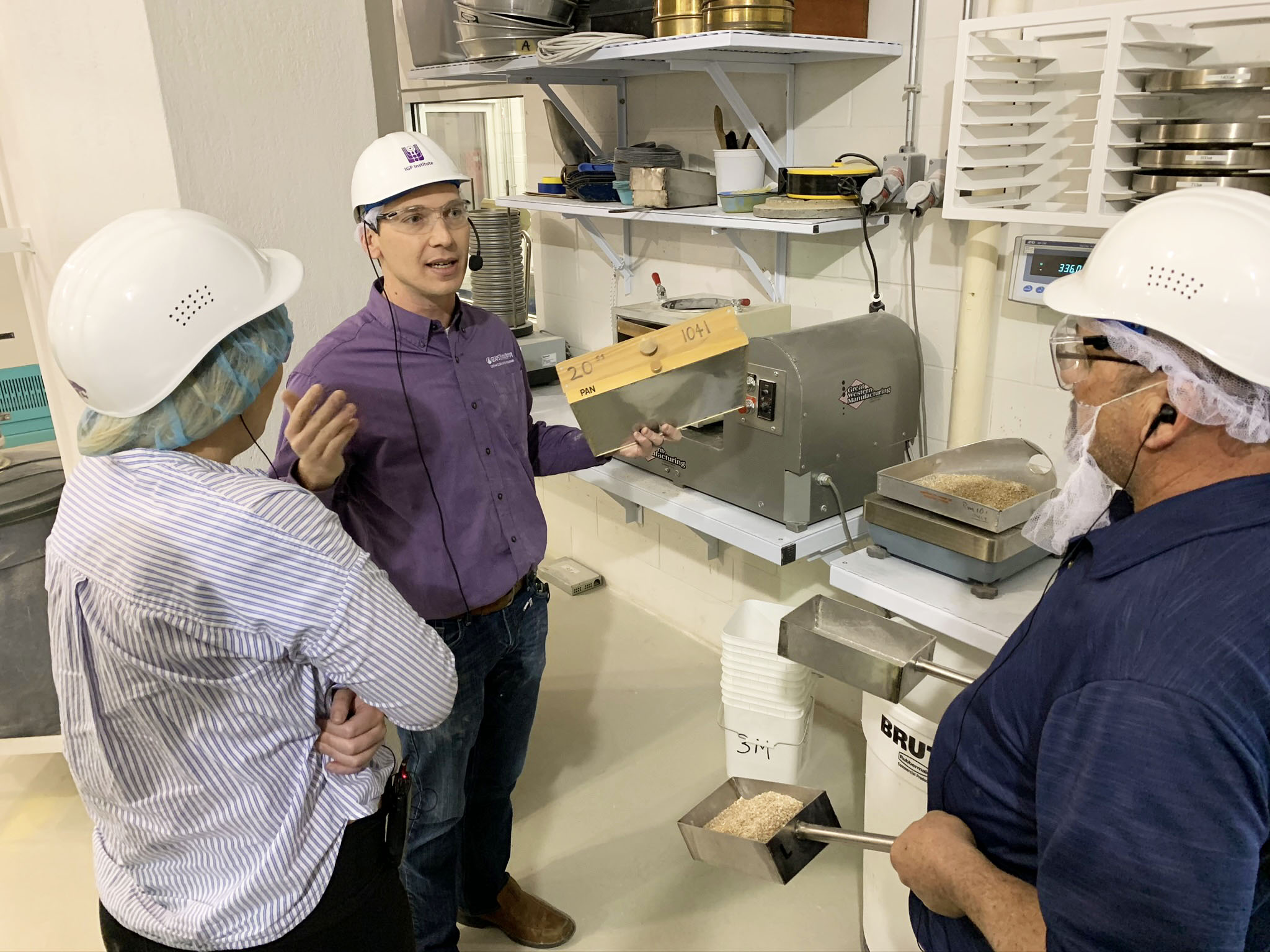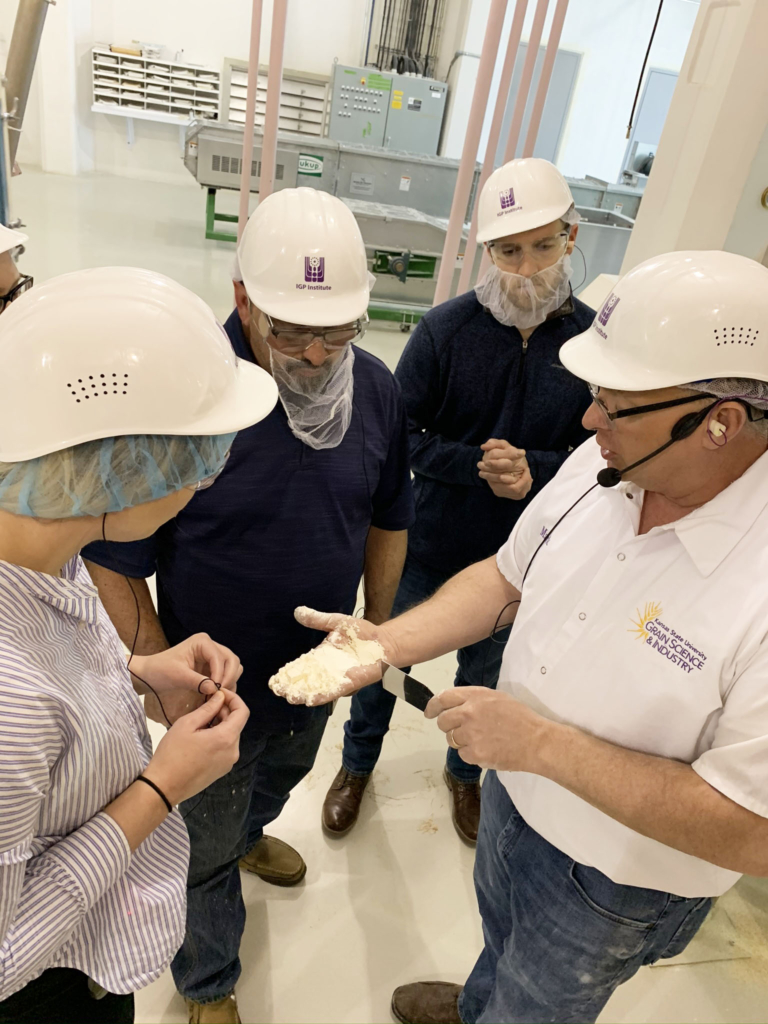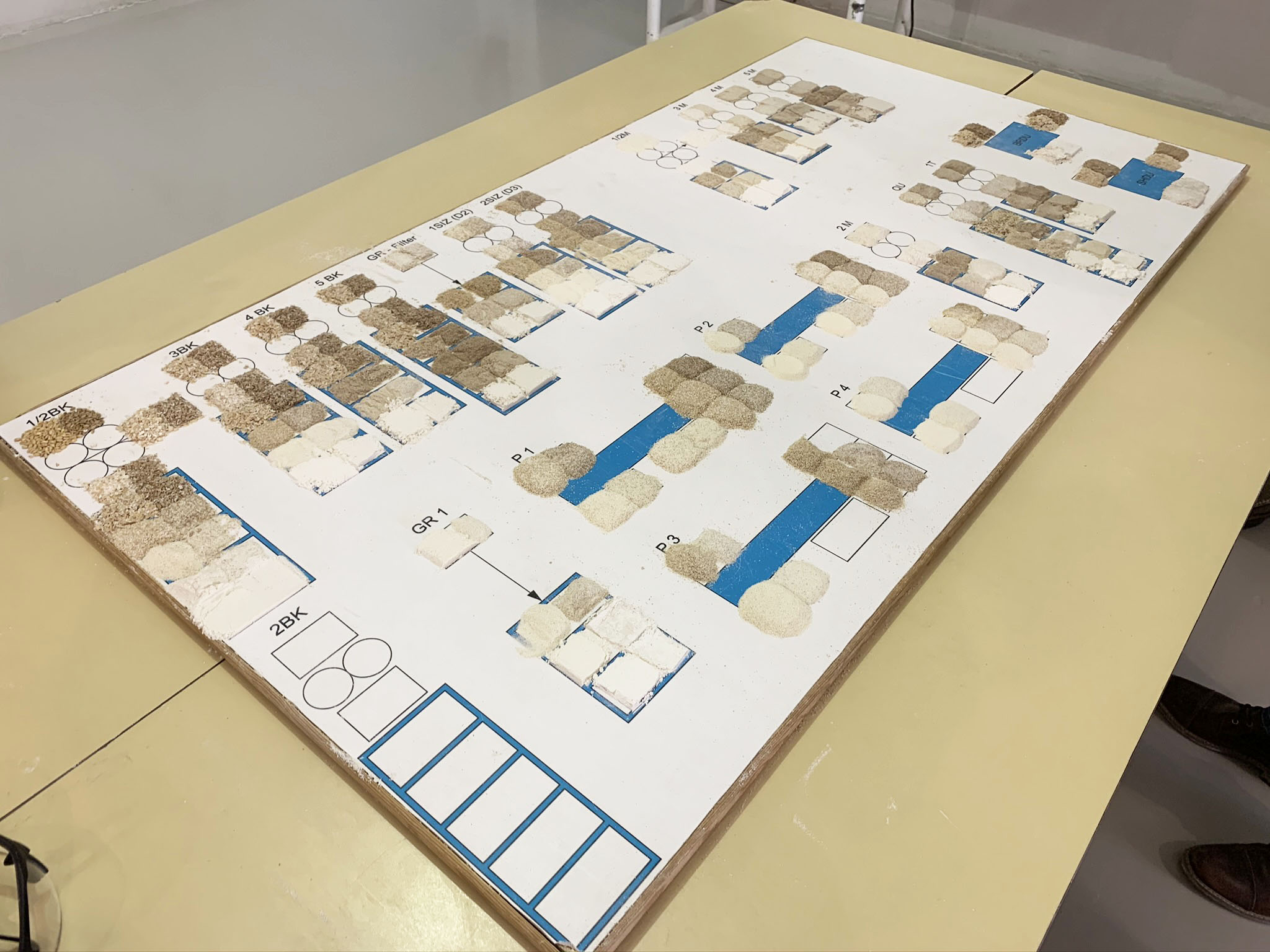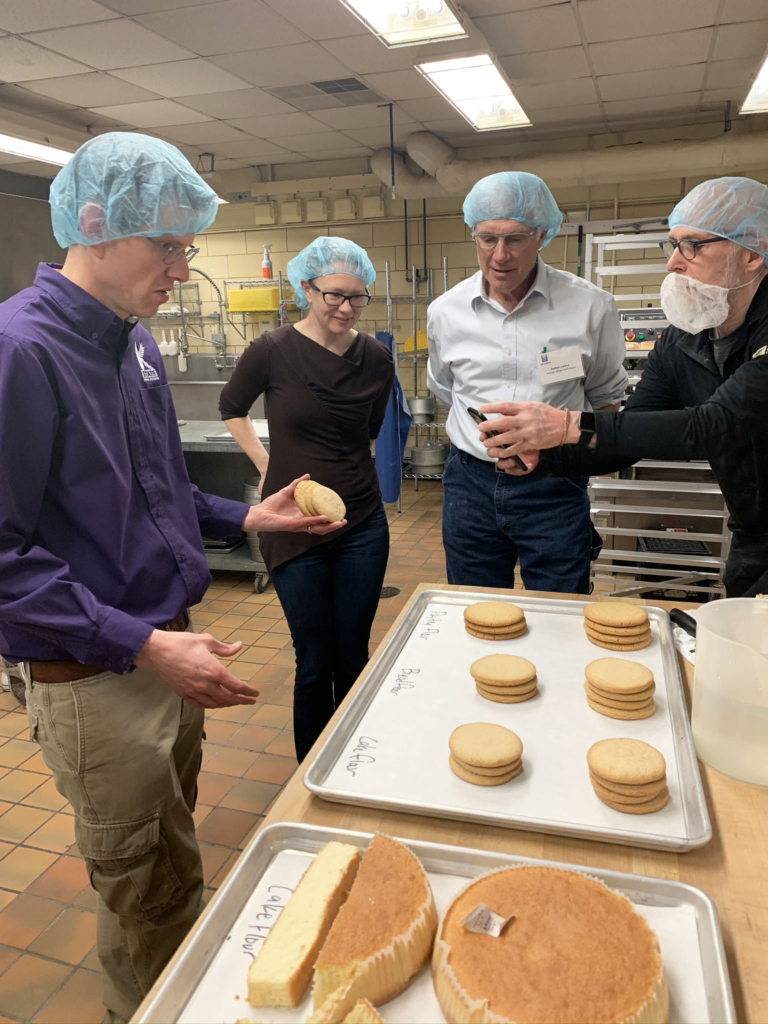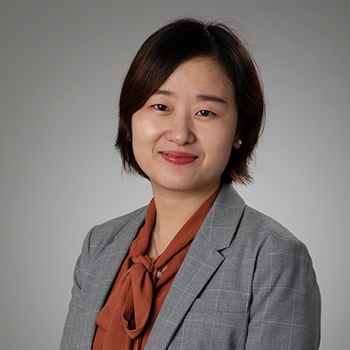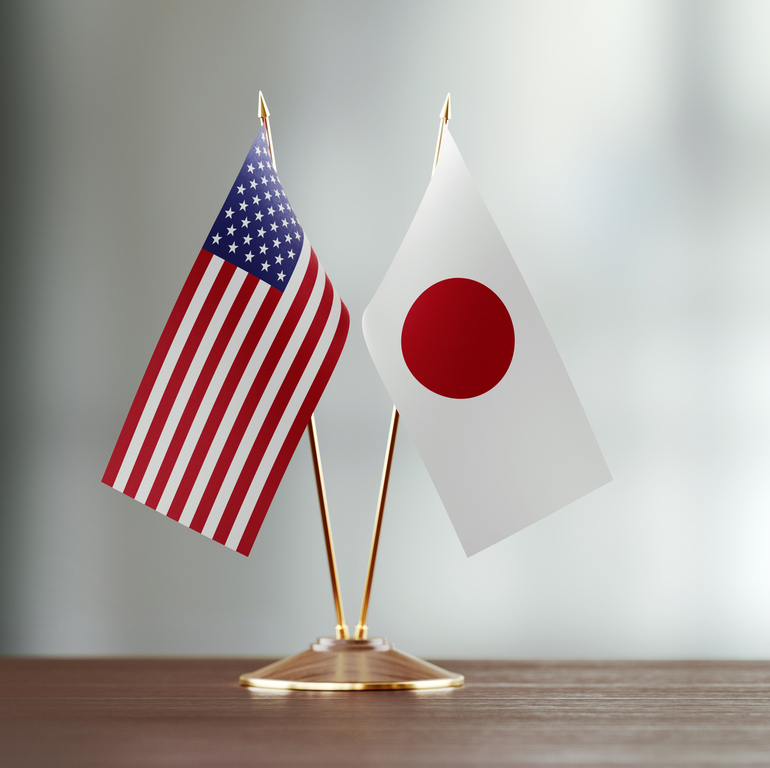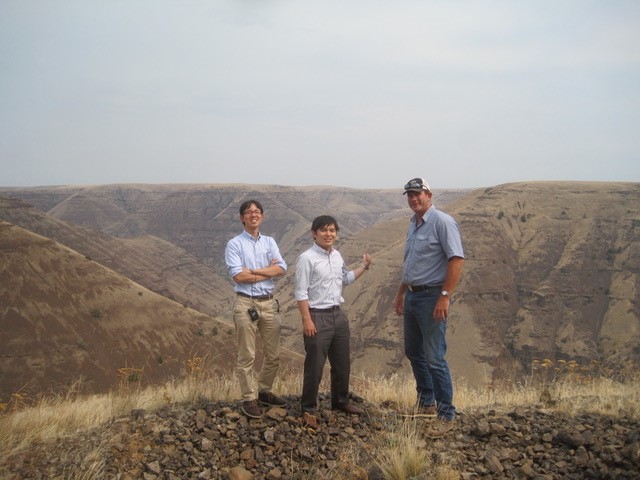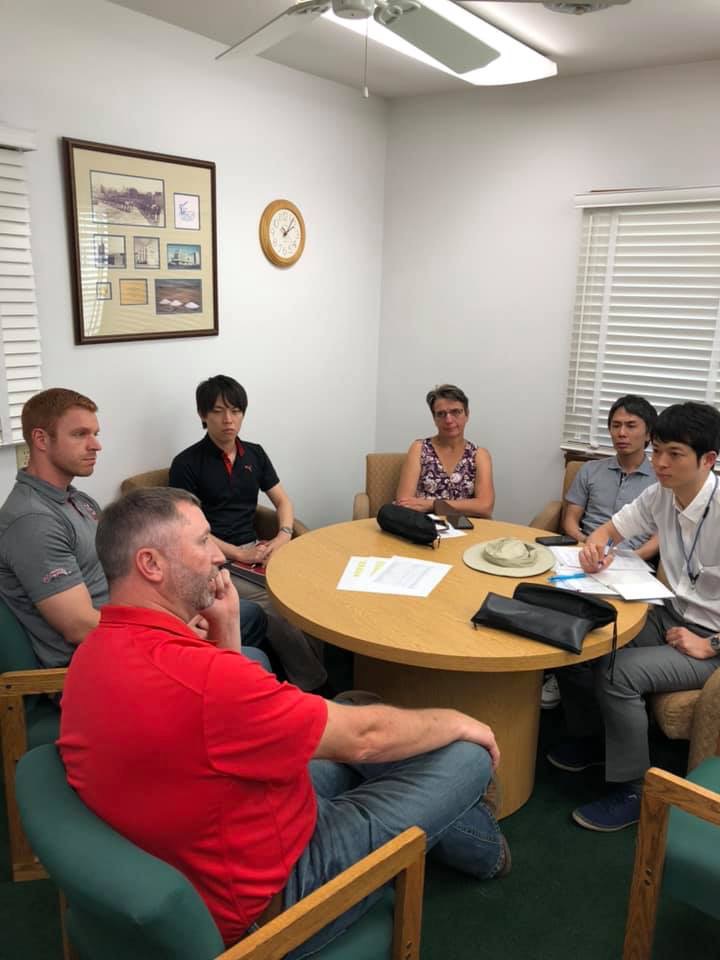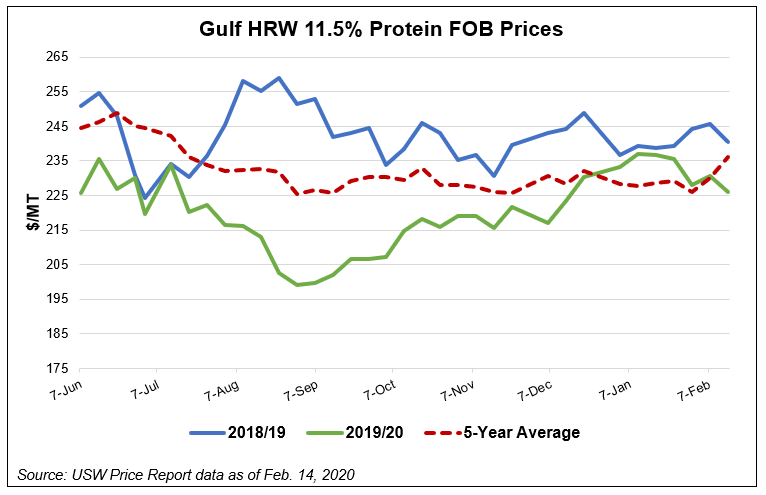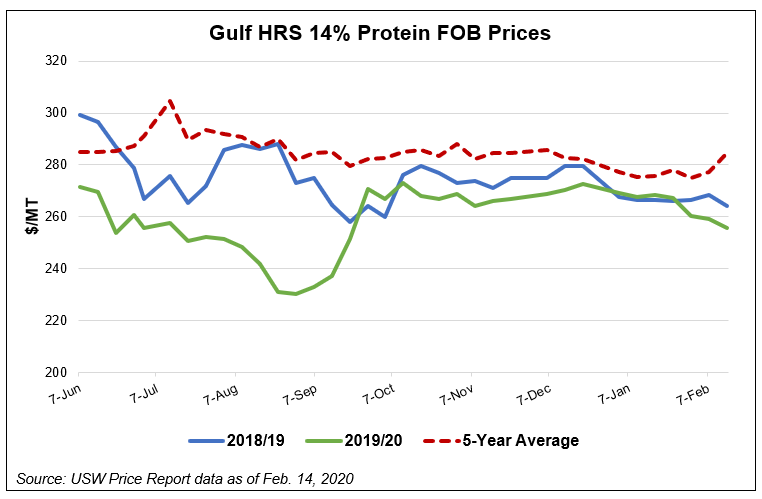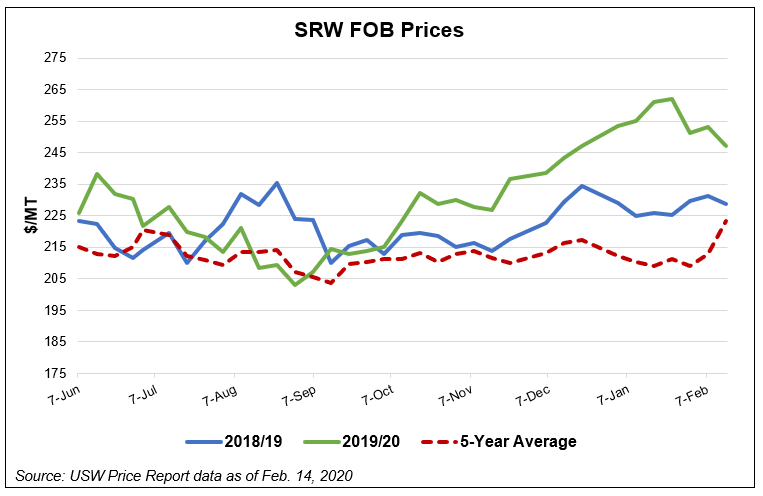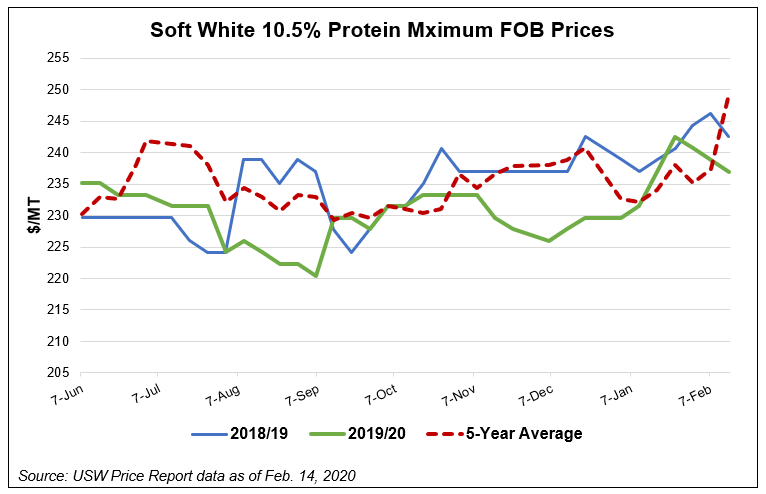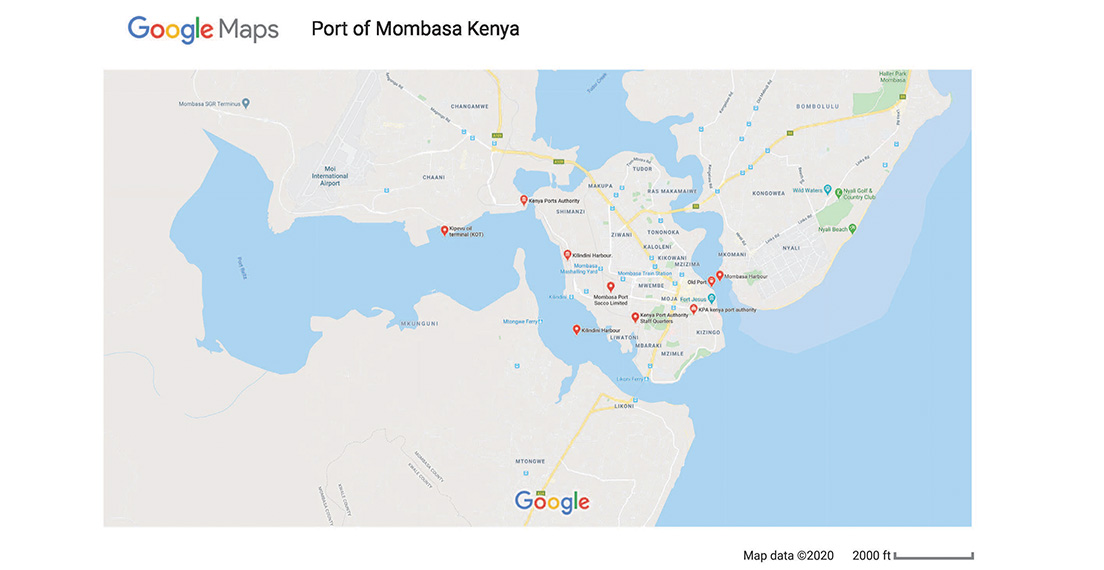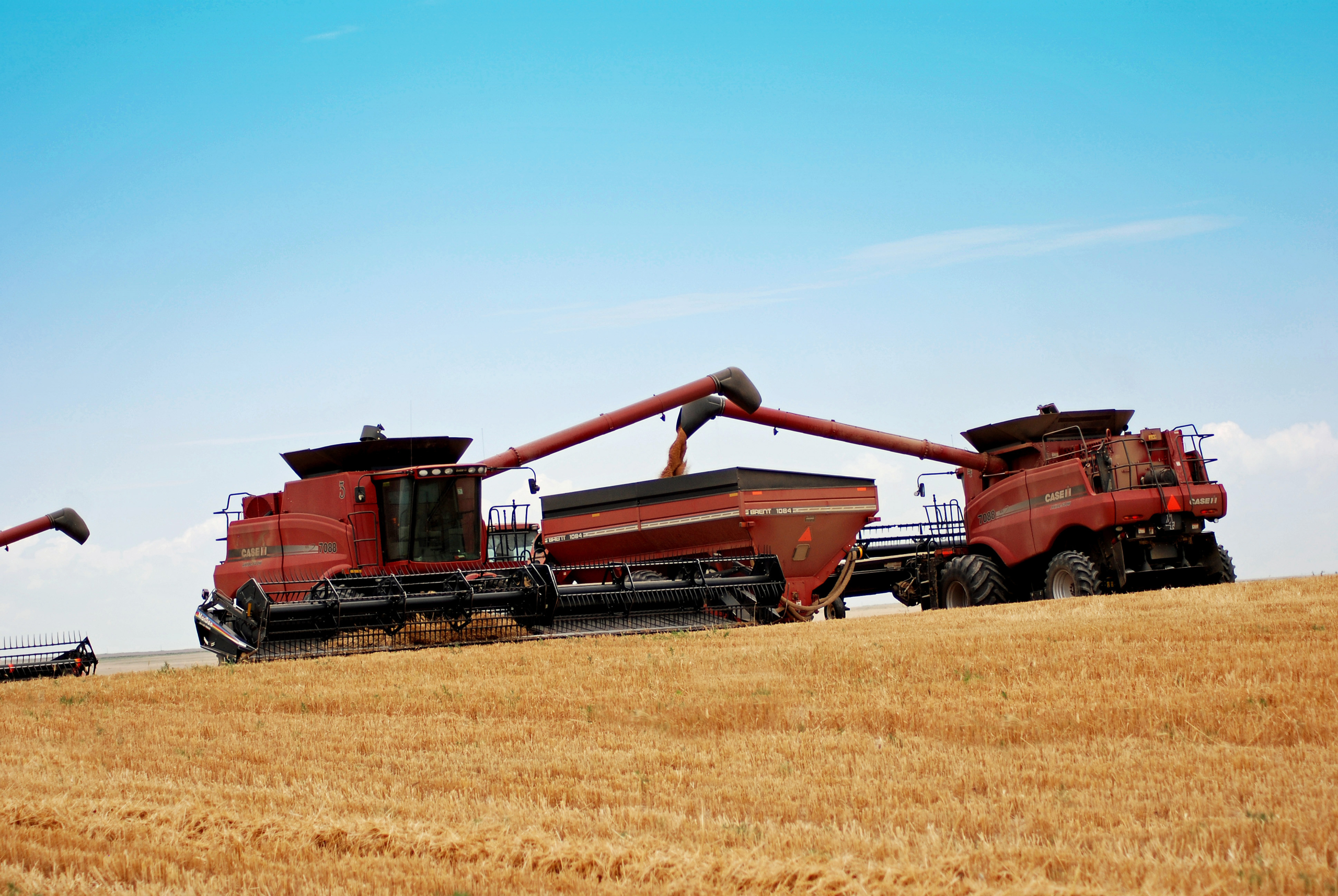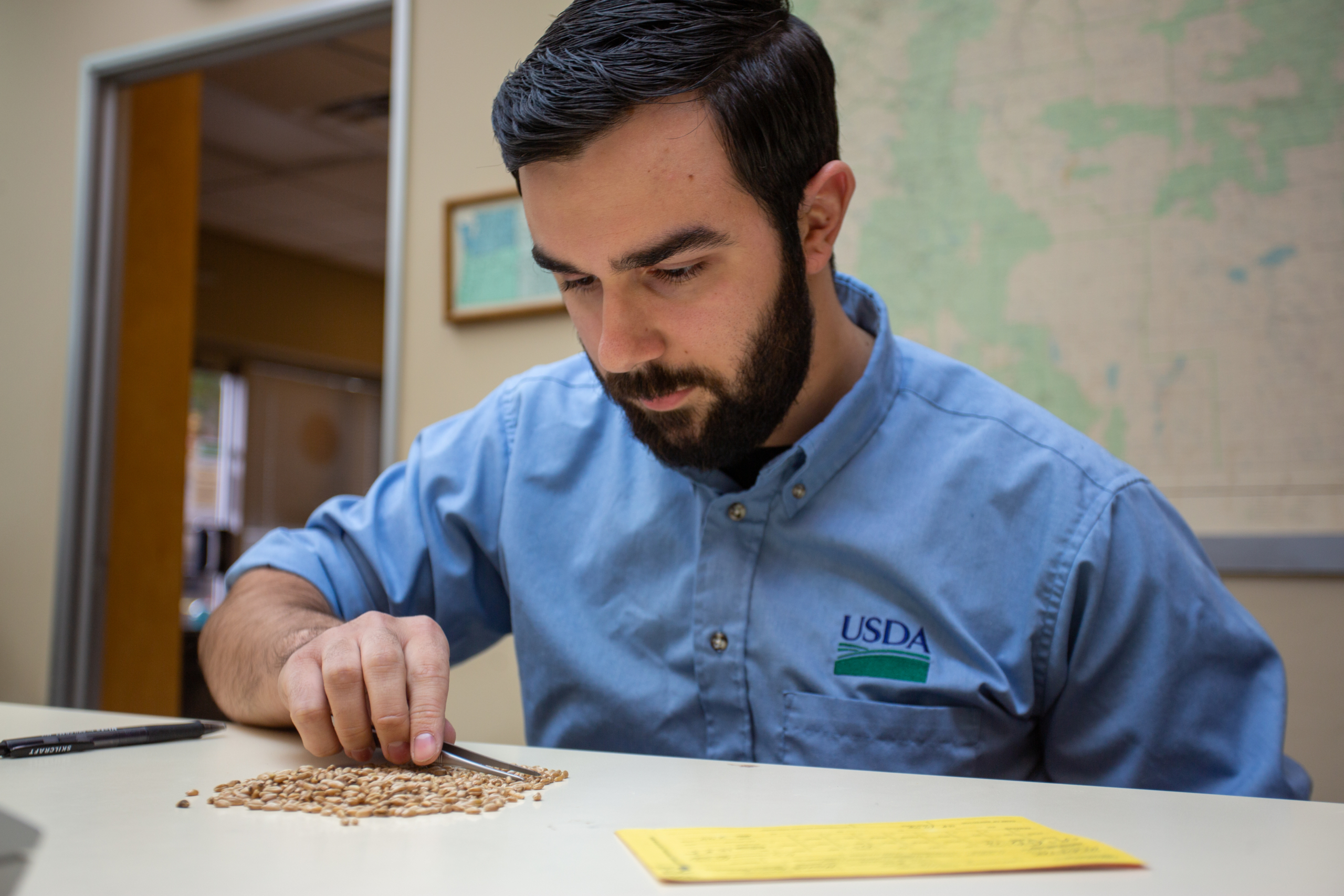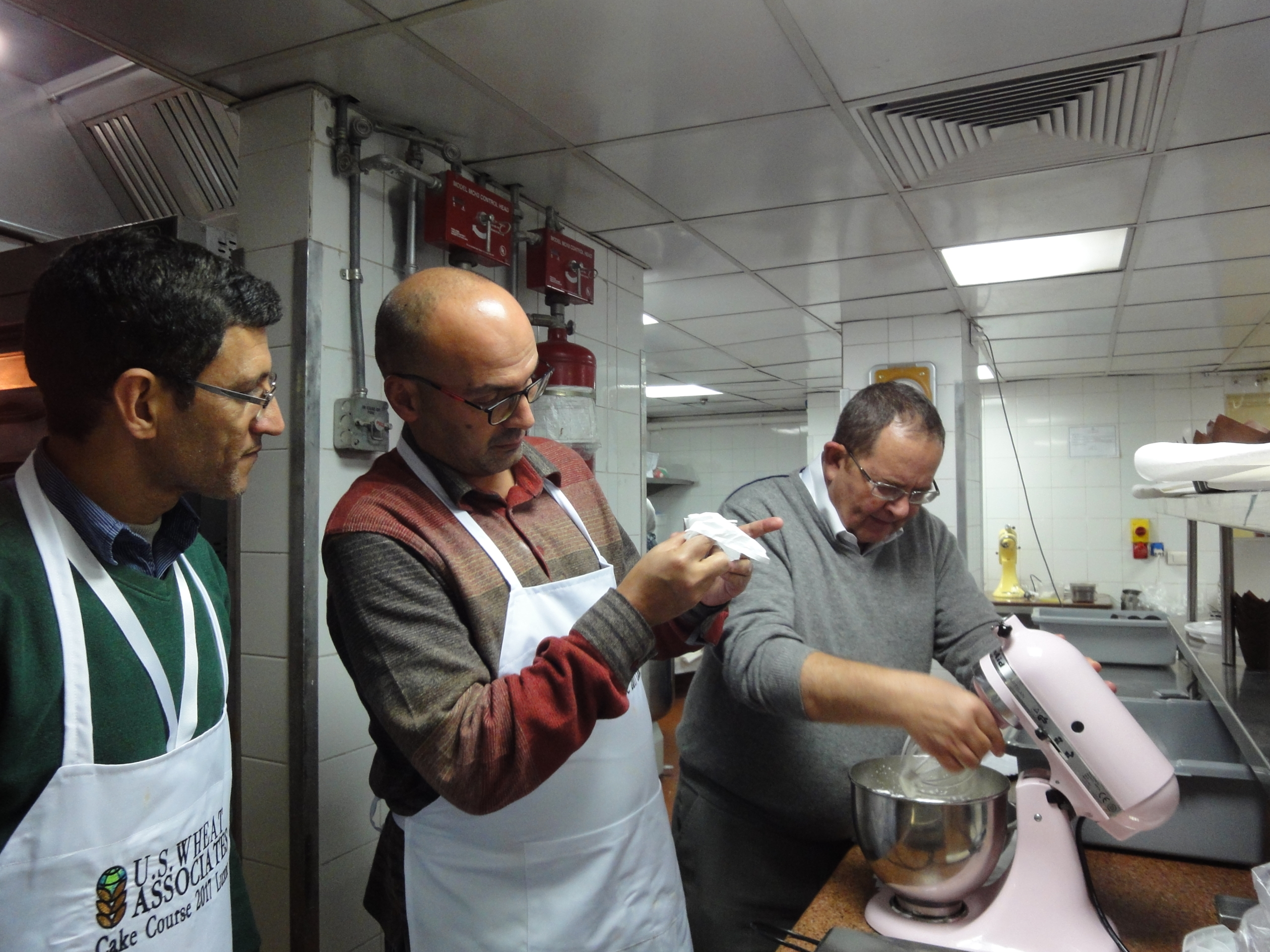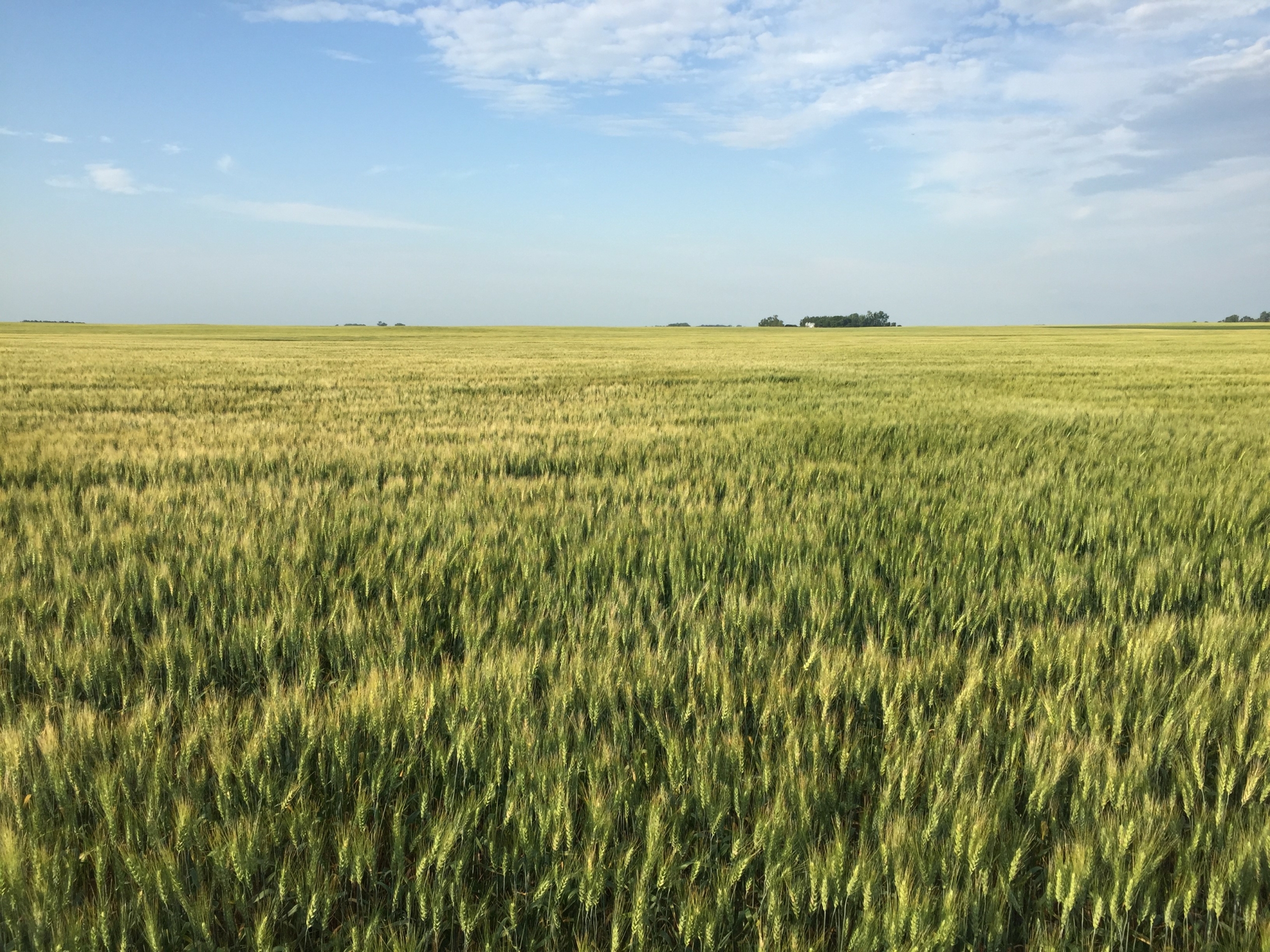Name: Ting Liu, Ph.D
Title: Technical Specialist
Office: USW China, Hong Kong Region, Beijing Office
Providing Service to: People’s Republic of China
Where and who we come from makes so much difference in each life. For Dr. Ting Liu, the skills she observed in her family as an only child in southeastern China’s Zhejiang province led directly to a doctorate in food science and her position as Technical Specialist with U.S. Wheat Associates (USW).
“I grew up with parents who produced and sold all kinds of furniture in our town, so they showed me how to stay in harmony with customers,” Dr. Liu said. “My love of food started as I watched my grandmother form dough for the many different Chinese wheat foods she made and sometimes helped me make.”
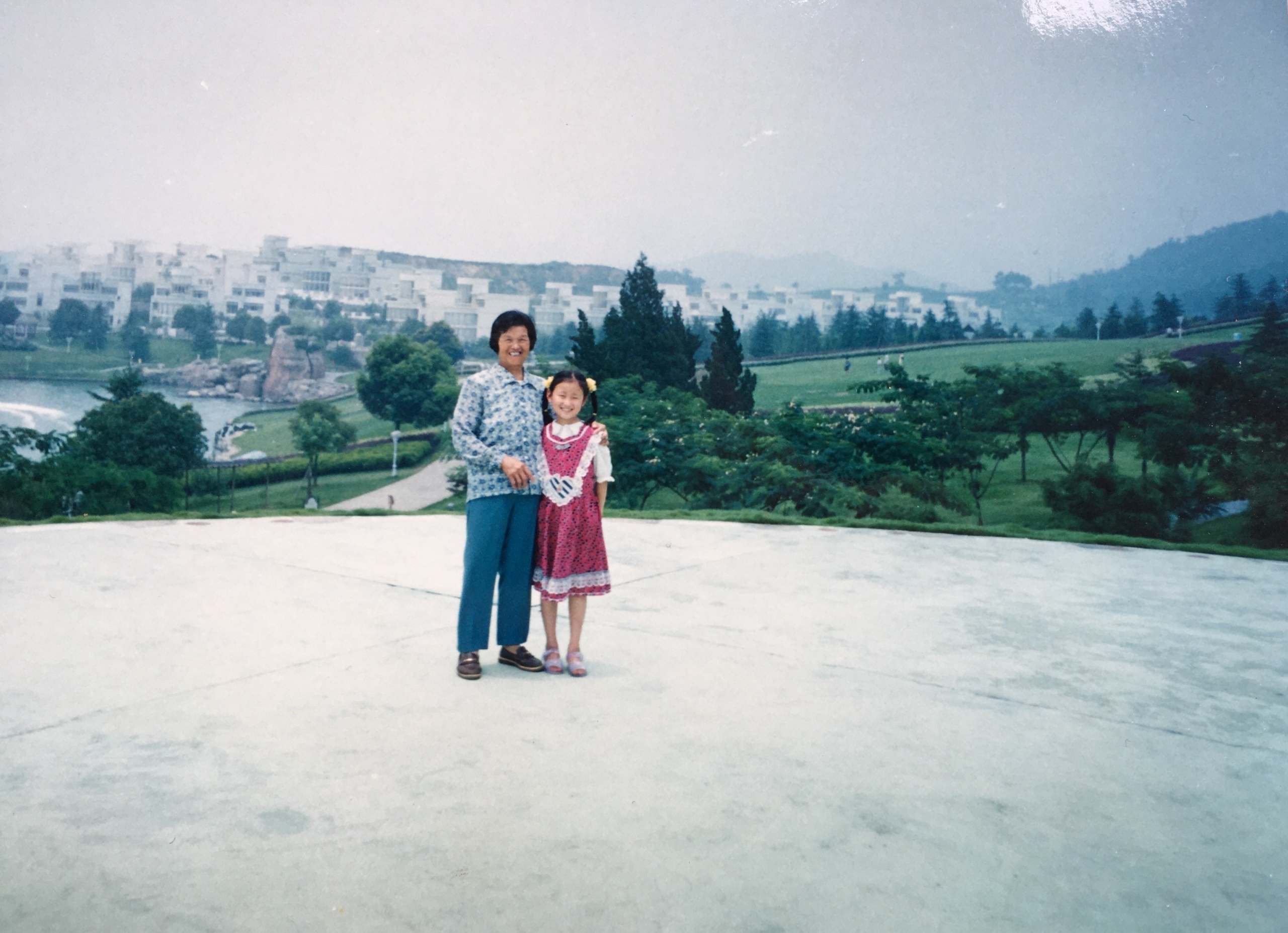
Ting as a child with her grandmother.
Filled with the traditions of her grandmother’s baking and a focus on schoolwork, Dr. Liu earned a spot in the Food Science and Engineering program at Zhejiang Gongshang University. Learning professional skills and participating in efforts to develop new products, including nutritious drinks and snacks, as she earned her bachelor’s degree, helped convince her that she should focus on food research and development.
“In order to build more food knowledge, improve my competitiveness and broaden my horizons, I decided to do graduate study in food science abroad,” Dr. Liu said.
U.S. Connections
She chose the University of Minnesota, Twin Cities, because it served a large agricultural state home to the headquarters of many large-sized food companies, such as Cargill and General Mills. Ultimately, her connections there helped lay the foundation of her work today representing U.S. wheat farmers in China.
“I decided to do my post-graduate research on whole wheat products because of my childhood memories and my understanding of the health benefits of whole grains,” Dr. Liu recalled. “That is how I met a very important advisor in my life, whose name is Dr. Len Marquart. Under his guidance during my doctoral study, I improved my English writing and communication skills, my ability to think independently, solve problems, and how to develop professional networks of influential people. He also made it possible for me to do my research as a visiting scholar at the Wheat Marketing Center (WMC) in Portland, Oregon, from June 2014 to January 2016.”
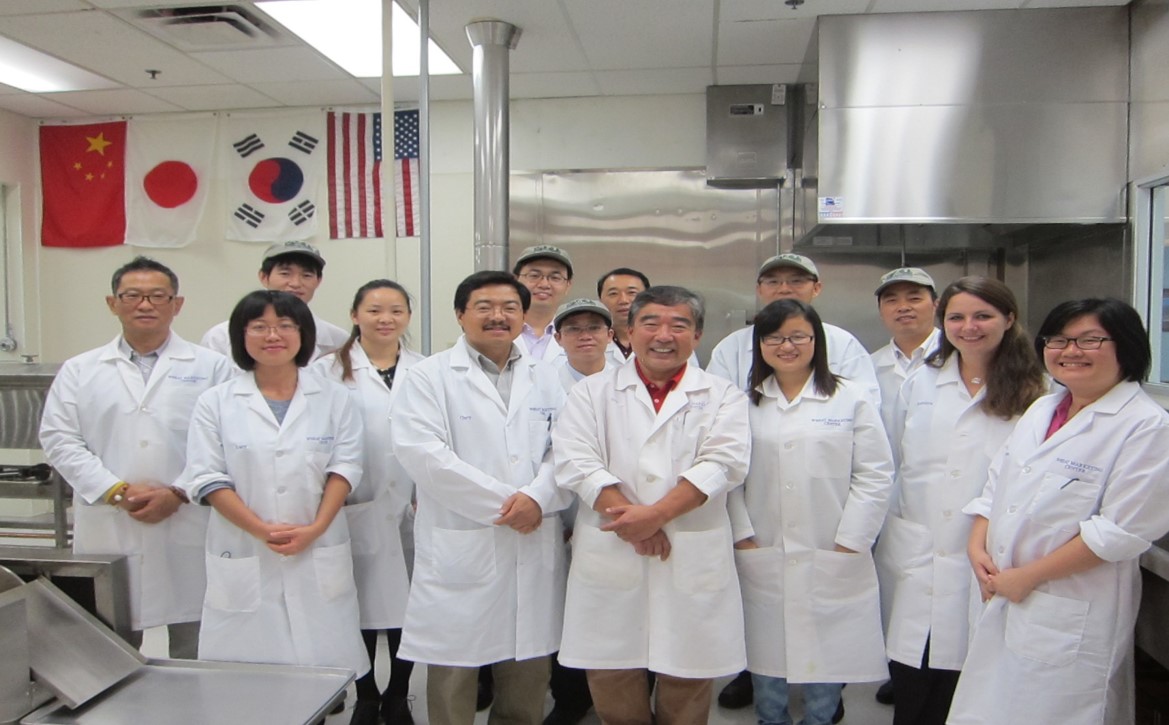
Ting (Third from the right, first row) with Wheat Marketing Center (WMC) Staff and USW China End Product Collaborative Team in 2015 at WMC.
Dr. Liu’s work at WMC was productive and transformative. Working with Dr. Marquart and former WMC Technical Director Dr. Gary Hou, she completed three research projects on improving the quality of whole wheat tortillas using different particle sizes of flour milled from U.S. hard red winter (HRW), hard red spring (HRS), and hard white wheat, sprouted whole wheat flour and a chemical leavening system. Through this research, Dr. Liu published six peer-reviewed technical papers and one book chapter in English on whole wheat products. She presented research results at the annual meetings of the American Association of Cereal Chemists (AACC) International and the Institute of Food Technologists. She was also actively involved in the AACC International Milling & Baking Division.
Dr. Liu said working at WMC exposed her to flour milling and wheat and flour quality analysis. She also helped prepare short courses and workshops on wheat products, prepared a range of wheat food products, and completed a research project on pan bread with added whey permeate. Much of that work was done under WMC’s educational partnership with USW.
Understanding the Mission
“One of my favorite things about working at WMC was helping host teams of wheat growers and students from all over the United States, as well as U.S. wheat customers from all over the world,” Dr. Liu said. “In 2015, I had the chance to meet the people working with USW in China when they brought three teams to WMC for different programs. This helped me better understand the USW mission and ignited my interest in joining the USW team in China.”
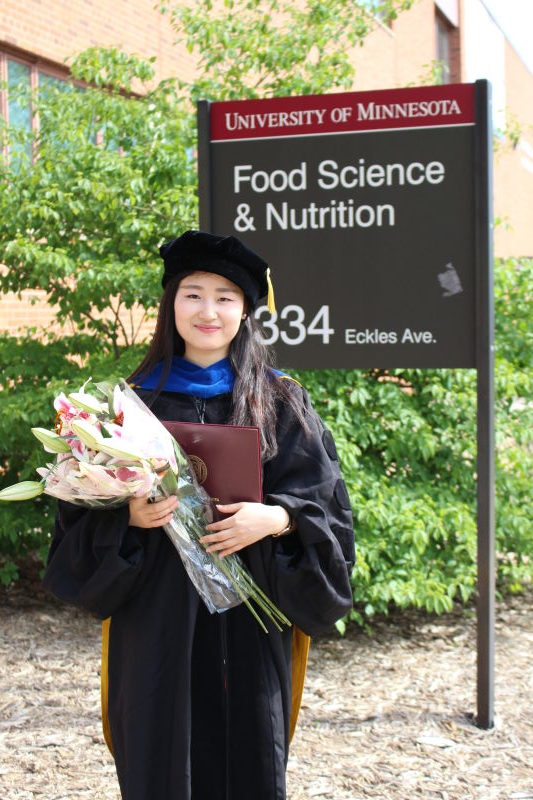
Ting graduated and obtained a Ph.D. in Food Science from the University of Minnesota in 2016.
Fortunately, as Dr. Liu completed her doctorate program in August 2016, a technical position was available in the USW Beijing office.
“Dr. Marquart believed I would be well-suited to a job serving as a liaison between U.S. farmers, their wheat, and the milling and wheat food industries in China,” Dr. Liu recalled. “During my job interview, USW Regional Vice President Jeff Coey told me the greatest asset of USW lies in its people who are truly good at what they do, are eager to share their knowledge with their teammates and customers, and tend to devote many years to the organization. I took the job as Technical Specialist without hesitation.”
“Ting already had a keen understanding of our mission from her work at the Wheat Marketing Center, and it was apparent right away that she would bring a tremendous value to our team and to our customers in China,” Coey said.
The need for additional wheat classes in China was increasing as Dr. Liu settled into her new position with USW in September 2016. According to IBIS World Industry Report, China’s bread and bakery product manufacturing industry grew rapidly at an annualized rate of 6.6 percent between 2013 and 2018. And until the government implemented retaliatory tariffs in March 2018, China was importing an annual average of 1.6 million metric tons of U.S. HRS, soft white, and HRW.
With that growth comes an opportunity for USW and Dr. Liu. USW continues to have a strong working relationship with the leaders and faculty at the Sino-American Baking School in Guangzhou and baking consultants to help China’s flour millers and wheat food processors better understand how to best utilize the characteristics of U.S. wheat classes to help grow their businesses. Under the guidance of Coey, USW Country Director Shirley Lu, Dr. Liu has taken on more and more of those responsibilities.
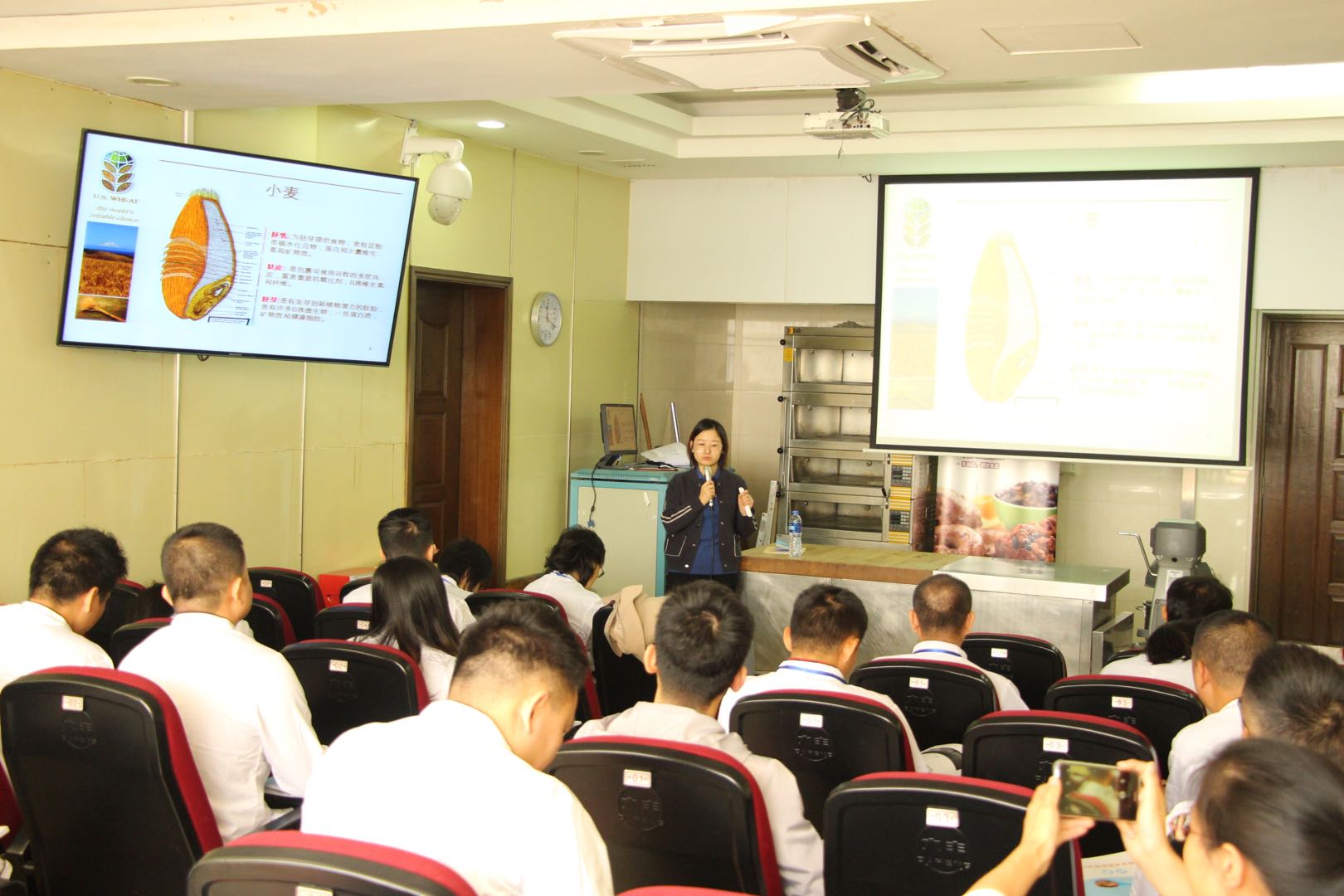
Ting conducted a Frozen Dough short course at Sino-American Baking School in 2019.
“Our team has great confidence in providing technical service that customers need to meet new consumer demand using U.S. wheat,” Lu said. “Ting has the expertise, language ability, nice personality, and high sense of responsibility that fit perfectly in the organization and our unique markets.”
It is clear that customers in China consider Dr. Liu a valued addition to USW’s service. They appreciate her undeniable professional credentials and achievements, but above all, they enjoy her sincere, friendly personality.
“Dr. Liu is very keen to use her professional expertise to solve practical problems in our technology research and development,” said one general manager of a flour mill in Guangdong province. “We want to express our heartfelt thanks to her and to U.S. Wheat Associates.”
Dr. Liu made a strong impression on the research and development manager at a very influential wheat buying and flour milling organization in China. She noted that Dr. Liu “takes the initiative to determine the technical needs of our company and provides cutting-edge information to solve problems and help the company. She always teaches complex knowledge with concise language and a sweet voice.”
Continuing Education
In her own generous way, Dr. Liu said USW has made it possible for her to get the best training and exposure to real-world milling and baking challenges as part of her work.
In 2018, USW sent Dr. Liu to a Baking Science and Technology course at AIB International in Manhattan, Kan., an intensive, 16-week program combining science, hands-on lab work, and baking tradition. She represented herself and USW with distinction, earning top student honors and an “Excellence in Laboratory Leadership” award for her participation in the course.

Ting completed the Baking Science and Technology (BST) Course at AIB International in Manhattan, Kansas, in 2018.
“I was also able to assist in the USW Baking Science and Technology, Cookie & Cracker, Frozen Dough, and Advanced Prepared Mix courses developed by our Bakery Consultant Roy Chung at the UFM Baking School in Bangkok, Thailand,” Dr. Liu said. “There is no doubt Mr. Roy is a master of baking and teaching and is very nice to share his technical service expertise and experience with me. Moreover, our Regional Technical Director, Mr. Peter Lloyd, has also provided tremendously valuable guidelines on troubleshooting and solving challenges in flour mills.”
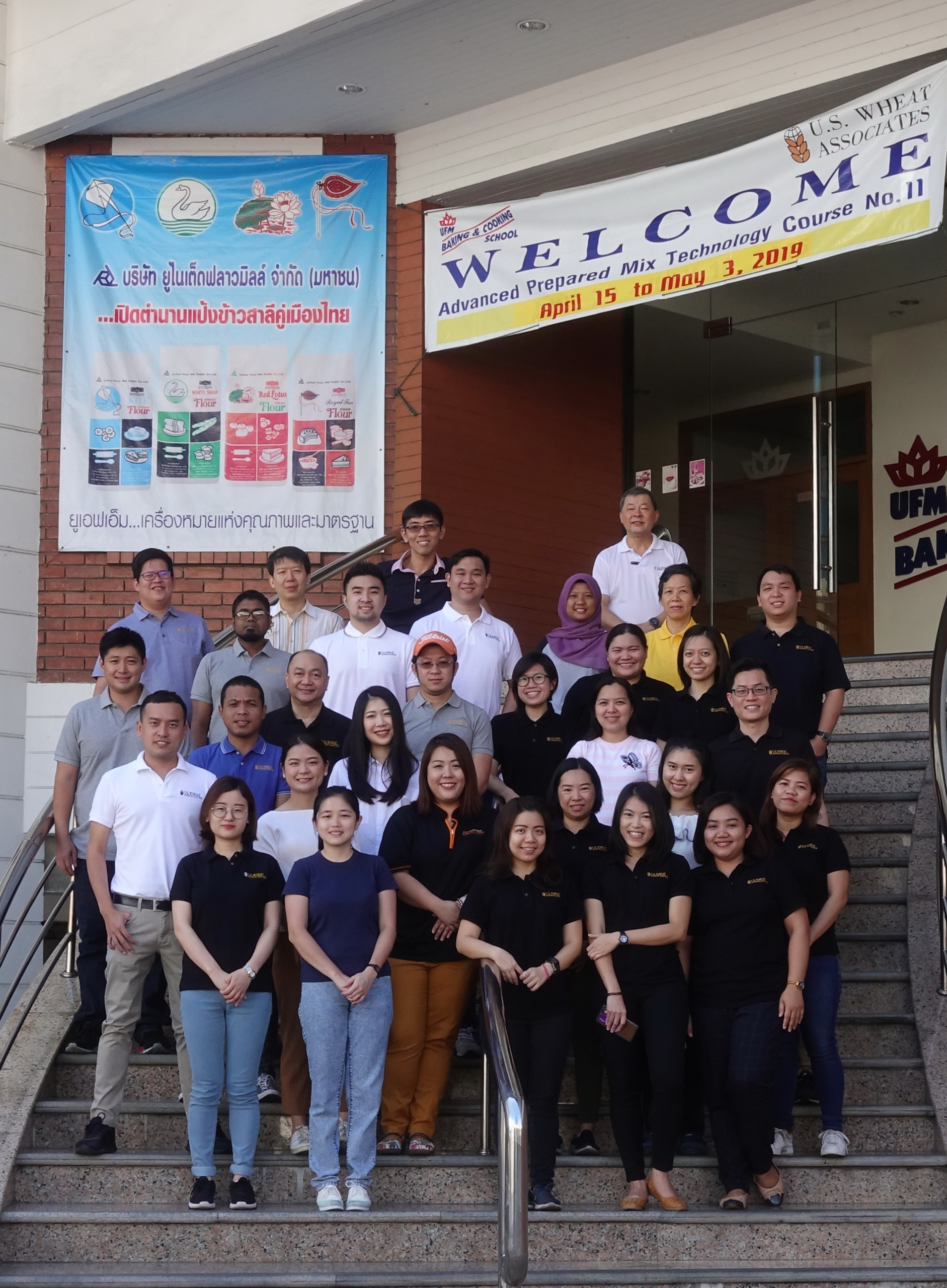
Ting (First from the left, first row) assisted in Mr. Roy Chung’s Advanced Prepared Mix Technology Course in 2019.
Her enthusiastic accounting of the training she has received, and the wide range of technical support she provides make it clear Dr. Liu loves the work she does on behalf of U.S. wheat farmers.
“By visiting and providing technical services to customers, we can better understand customer needs and reflect these requirements to U.S. wheat farmers,” she noted. “At the same time, we can enhance our customers’ effective processing of U.S. wheat flour and how its functional attributes perform for the baker.
“In addition, the seminars and short courses I have conducted can help current and potential customers further understand the characteristics of U.S. wheat and flour, the flour milling process, testing methods, and ways to adjust formulas and processes according to flour specifications. This is of direct benefit to U.S. wheat growers by promoting their wheat to customers in international markets.”
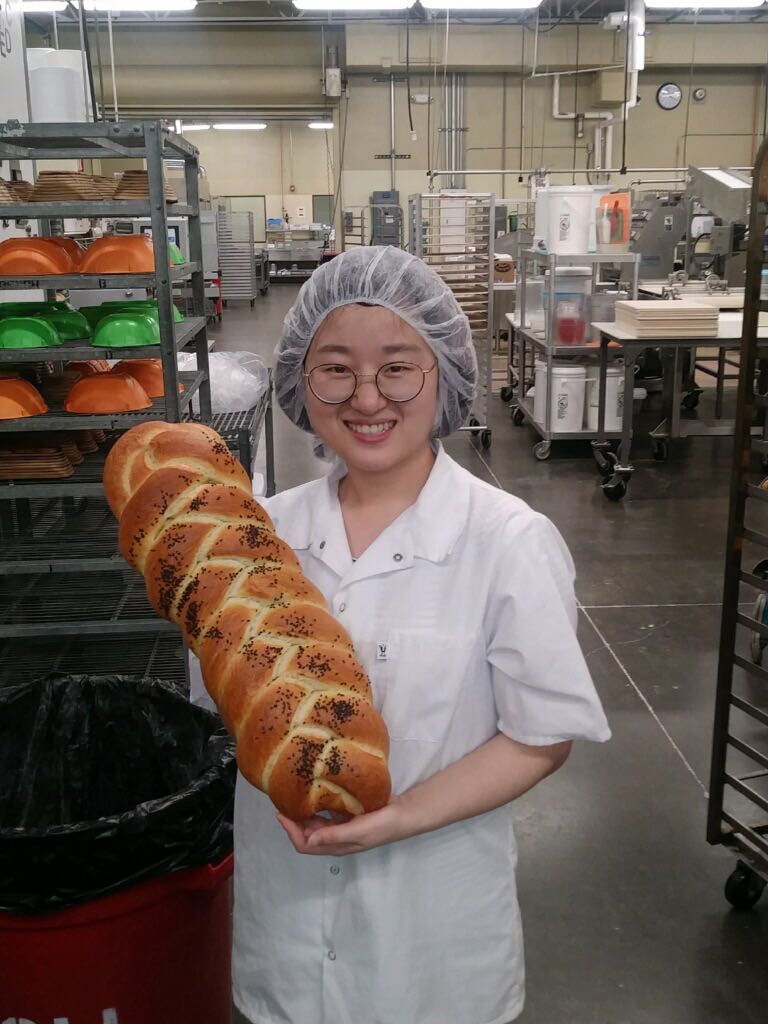
Ting and her bread while attending a BST course at AIB International in 2018.
An Excellent Bridge
In fact, after one recent USW Crop Quality Seminar and a special technical session attended by top Chinese flour mills and food processors, a food company executive commended Dr. Liu’s professional analysis and insight on the supply, quality, and application of U.S. wheat classes.
“She was clear and confident in her presentations and is a knowledgeable expert. I believe she will be an excellent bridge between U.S. Wheat Associates and customers.”
Even in the face of challenging political realities and complex commercial dynamics, private and public customers in China continue to seek information and advice from USW.
“No customer is compelled to work with USW,” Jeff Coey said. “The fact that they choose to accept our service and the products we promote is a testament to everyone on our team,” Jeff Coey said. “Ting complements our ability to earn that trust, understand the constraints, and grasp the opportunities in this market for U.S. wheat. She has a naturally winning way of opening doors for us wherever she goes.”
By Steve Mercer, USW Vice President of Communications
Editor’s Note: This is the seventh in a series of posts profiling U.S. Wheat Associates (USW) technical experts in flour milling and wheat foods production. USW Vice President of Global Technical Services Mark Fowler says technical support to overseas customers is an essential part of export market development for U.S. wheat. “Technical support adds differential value to the reliable supply of U.S. wheat,” Fowler says. “Our customers must constantly improve their products in an increasingly competitive environment. We can help them compete by demonstrating the advantages of using the right U.S. wheat class or blend of classes to produce the wide variety of wheat-based foods the world’s consumers demand.”
Header Photo Caption: Ting presented “International Whole Grain Development” at the 2017 Sino-Foreign Whole Grains Industry Development Experts Forum.
Meet the other USW Technical Experts in this blog series:
Shin Hak “David” Oh – Expertise Fermented in Korean Food Culture
Tarik Gahi – ‘For a Piece of Bread, Son’
Gerry Mendoza – Born to Teach and Share His Love for Baking
Marcelo Mitre – A Love of Food and Technology that Bakes in Value and Loyalty
Peter Lloyd – International Man of Milling
Ivan Goh – An Energetic Individual Born to the Food Industry
Adrian Redondo – Inspired to Help by Hard Work and a Hero
Andrés Saturno – A Family Legacy of Milling Innovation
Wei-lin Chou – Finding Harmony in the Wheat Industry
